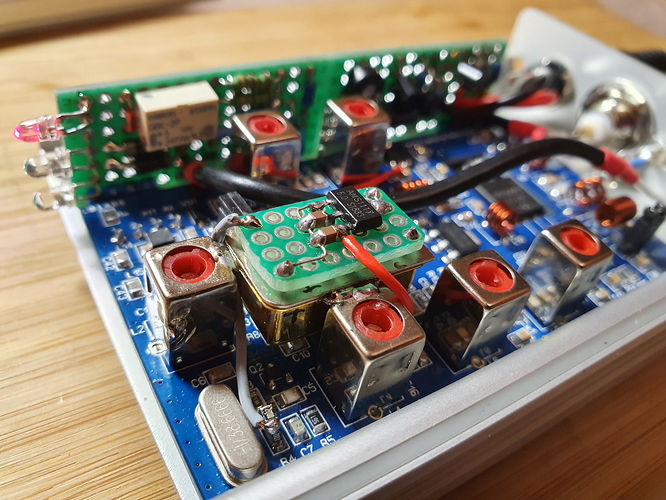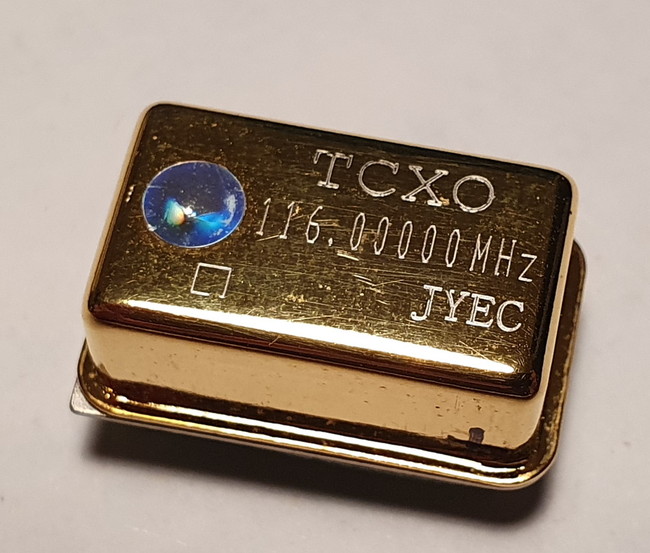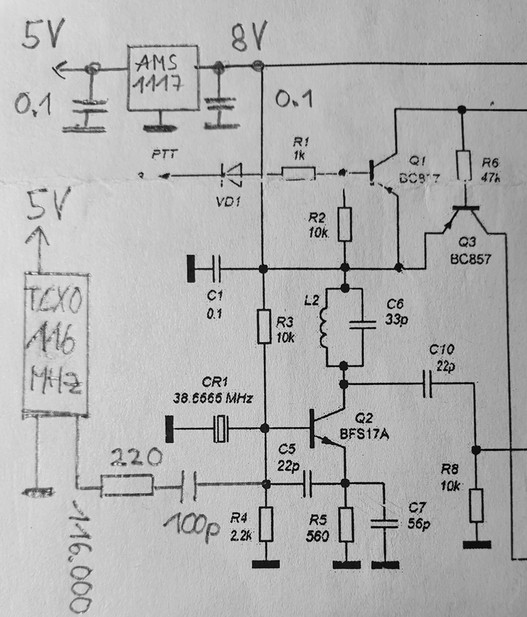I converted the transverter to operate with a TCXO. The TXCO comes from a finished circuit board.
Armin made the suggestion.
I only used the 116 MHz chip and voltage regulator. The originally installed quartz can remain in the circuit. It is important that the 100p capacitor and the 220Ohm resistor are installed as close as possible to the transverter board. Here, SMD components are absolutely preferable (see picture).
73 Chris
[https://www.ebay.de/itm/116MHZ-hifi-TCXO-0-1ppm-Ultra-precision-golden-Oscillator-Clock-on-power-supply/133261062748]).
73 Chris


